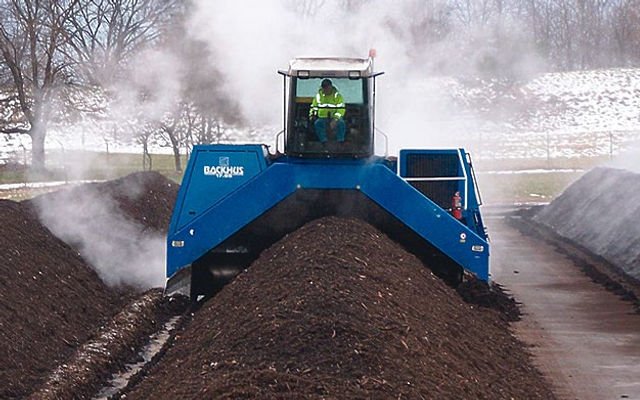Composting by static windrow turning and home composting technique
Continuing with the topic of the main composting methods and techniques for aerobic or anaerobic decomposition, we will begin by describing composting using the aerated static windrow technique, which basically consists of forcibly aerating the material being composted. The pile is built on a network of pipes, where air is frequently supplied or extracted to provide an aerobic environment.



▶ This technique is also known as active or hot technique: the temperature is controlled to allow the development of the most active bacteria, kill most pathogens and germs, and thus produce useful compost quickly, another technique is composting in turning piles, in this composting system is the most used, and is performed by manual or mechanical turning. In this method the material is heaped, mixed and turned periodically, thus avoiding compaction and delivering oxygen to the system.

▶ Credits: The-sun. – [Image of Public Domain]
≕ I invite you to stay tuned and read my next contribution ≔
Most industrial and commercial composting plants use active processes, because they guarantee better quality products in a shorter period of time. The highest degree of control, and therefore the highest quality, is usually achieved by composting in a closed vessel with continuous monitoring and adjustment of temperature, air flow and humidity, among other parameters.
While home composting is more varied, fluctuating between extremely passive techniques to active techniques typical of an industry. For this purpose, a place is chosen outdoors, either in the yard or garden, preferably far from the house or kitchen, with sun and shade during the day.
Every time new organic waste is added to the compost or once a week, everything is stirred with a rod, this step is very important to ventilate the materials. In three or four weeks it will be difficult to distinguish what has been deposited except for the most recent waste. Deodorizing products can be used, although a well-maintained pile rarely produces bad odors.

After four months it will turn into humus (a plant name for the Earth that is formed by the decomposition of organic matter) and this results in a wonderful living compost, with a great density and variety of microorganisms that synthesize enzymes, vitamins, hormones, etc. and that have a favorable effect on the biotic balance of the soil.
NOTE: Reference material.
0
0
0.000
0 comments